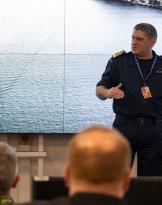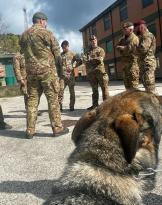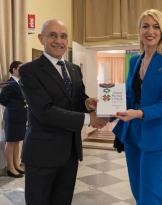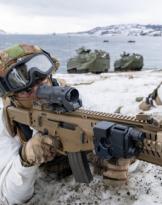Turtle in sight! He is the officer on guard on the bridge who with a few words alerts the crew of the Levanzo ship who, off the Calabrian coast, helps a wounded turtle.
A few minutes of observations and then immediately the predispositions to take on board the head. The commander contacts the port authority of Vibo Valentia and asks for veterinary support. It is the same captaincy that puts the ship in contact with the veterinarian who, on the phone, asks for confirmation of some morphological and behavioral parameters of the turtle.
The first tests confirm that the turtle really needs help (difficulty in diving, presence of algae and small lepadi on a wound on the carapace and crabs attached to the body). The diagnosis, even if on the phone, is clear, the turtle must be recovered and assisted in a center equipped for the management, hospitalization and treatment of sea turtles.
 In a short time the ship is reached by a patrol boat of the Port Authority of Vibo which takes delivery of the turtle to transfer it to a WWF protected oasis in the area to be treated and then freed.
In a short time the ship is reached by a patrol boat of the Port Authority of Vibo which takes delivery of the turtle to transfer it to a WWF protected oasis in the area to be treated and then freed.
There are seven species of sea turtle that inhabit our seas and that risk extinction due to the now innumerable pitfalls that threaten this animal species. From the cementification to the degradation of the coasts and coasts and to the different fishing systems used as bottom trawls, longline hooks and fixed nets, where tens of thousands of turtles accidentally remain trapped and about 40.000 every year find death.
Turtles are predators and play a fundamental role in our seas, keeping intact the balance of marine ecosystems. Some species feed on jellyfish. The latter are increasing in our seas precisely because predators such as tuna, swordfish and, in fact, turtles are decreasing.
Another aspect not to be overlooked is the contribution these animals make in the formation of new ecosystems. During migration, encrusting algae or other small animals can be planted on the carapace and, moving from one place to another, favor the formation of new colonies. Preserve the species also to protect marine ecosystems.













